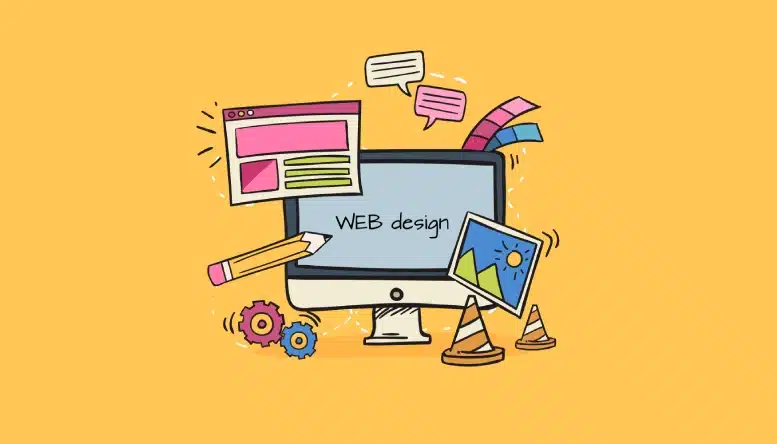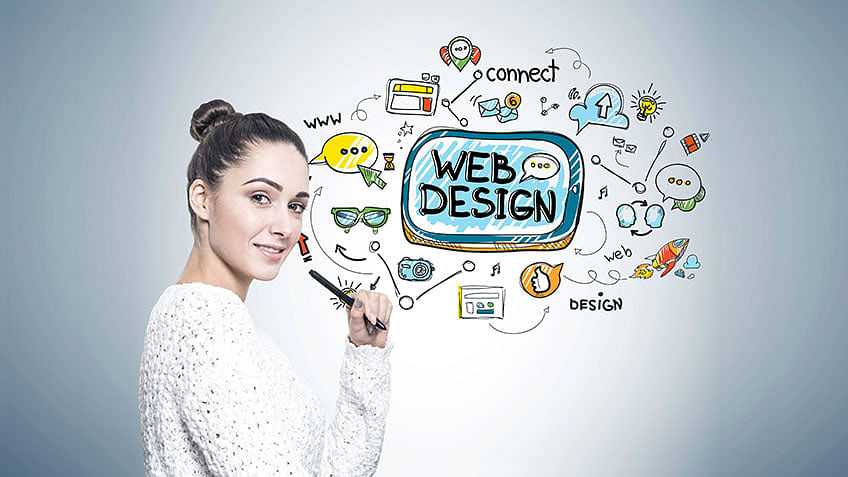SEO Marketing Las Vegas Designed for Helping Your Business Thrive Online
SEO Marketing Las Vegas Designed for Helping Your Business Thrive Online
Blog Article
Creative Internet Style Solutions for Modern and Engaging Sites
In the world of web design, the quest of modern and appealing options has actually become significantly crucial for organizations intending to capture user focus. By incorporating strong color plans, interactive elements, and responsive formats, designers can produce experiences that not only resonate with individuals yet additionally enhance brand identity.
Accepting Strong Color Design
In website design, the calculated use strong shade plans can considerably enhance user engagement and brand identification. By utilizing vibrant colors, developers can produce visually striking internet sites that catch interest and promote a remarkable experience. An appropriate color combination not just reflects a firm's worths but also evokes specific emotions that can influence user actions.
Vibrant shades can be utilized to guide customers' focus to crucial aspects such as contact us to activity, boosting conversion rates. Making use of contrasting colors for buttons and web links can make these elements stand out, motivating users to communicate even more easily. A cohesive color system across the web site reinforces brand recognition, producing a sense of experience and count on among site visitors.
Nevertheless, it is critical to stabilize strong shades with sufficient white room to prevent frustrating individuals. Effective use of typography additionally enhances strong shades, making sure readability while preserving visual appeal. Inevitably, welcoming vibrant color design in internet layout not just boosts aesthetic high quality but also plays an important function in accomplishing strategic organization goals, making it an essential consideration for contemporary internet development.

Using Interactive Aspects
Interactive components are important in modern-day internet layout, as they significantly improve user interaction and produce a more dynamic browsing experience. By incorporating features such as animations, float effects, and clickable elements, internet sites can encourage customers to check out material better and return for future visits.

Micro-interactions, such as refined computer animations when a button is clicked or a kind is sent, can likewise enhance the user experience by providing immediate responses. These tiny details can make the site really feel even more receptive and to life, promoting a sense of link between individuals and the site.
In addition, gamification aspects, such as incentives for finishing certain actions, can encourage individuals to engage with the content extra deeply. By thoughtfully incorporating these interactive components, web designers can produce a memorable and appealing on the internet experience that resonates with users and urges them to return.
Implementing Responsive Layout
Carrying out receptive style is important in today's multi-device landscape, making certain that websites give an optimal watching experience across various screen dimensions. As users increasingly access the internet with smart devices, tablets, and desktops, a one-size-fits-all approach is no more practical. Responsive design enables seamless navigating and communication, adapting layout and content to fit the tool being utilized.
Secret concepts of responsive style include fluid grids, flexible images, and media questions. Fluid grids use loved one systems, such as portions, as opposed to taken care of pixels, making it possible for aspects to resize proportionately. Adaptable pictures scale within their consisting of elements, avoiding overflow and preserving aesthetic integrity. Media questions promote the website here application of different styles based upon the gadget's features, such as size, height, or resolution, enabling designers to customize the customer experience efficiently.
In addition, receptive design boosts search engine optimization efficiency, as internet search engine favor mobile-friendly websites. By carrying out check it out responsive layout, businesses not just enhance customer fulfillment and engagement however also raise their reach in a competitive electronic landscape. As modern technology remains to evolve, taking on responsive layout has actually ended up being a fundamental technique for any modern and interesting site.
Incorporating Multimedia Material
Multimedia web content plays an important duty in developing engaging and vibrant internet experiences that record customers' attention and boost understanding. By integrating message, photos, sound, and video clip, websites can use a richer narrative that attract numerous learning styles and choices. This combination not just reinforces customer engagement however also help in conveying complex ideas succinctly.
Integrating top notch images and infographics can separate textual web content, making it a lot more absorbable. Video tutorials and discussions can offer extensive understandings that fixed web content might not fully communicate. Audio components, such as podcasts or background music, can likewise improve the ambience of an internet site, creating a much more immersive experience.
In addition, the strategic use of multimedia can boost SEO performance, as internet search engine prefer diverse web content types, enhancing exposure. It is vital to guarantee that multimedia elements do not hinder page lots times, as this can lead to individual stress. By stabilizing multimedia integration with efficiency factors to consider, web designers can develop visually appealing and functional websites that resonate with individuals, fostering a deeper connection and motivating return check outs.
Prioritizing Customer Experience

To achieve an ideal user experience, designers must focus on several essential concepts. Clear telephone calls to activity, readable typography, and arranged web content guide users, decreasing cognitive tons.
Furthermore, including user go to this web-site feedback into the layout process is important. Normal screening with genuine individuals assists recognize discomfort points and areas for renovation, allowing for repetitive enhancements. Eventually, prioritizing UX not only boosts user satisfaction however additionally drives involvement and conversion prices, making it an important aspect of modern web style approaches. By placing individuals at the center of layout efforts, internet sites can develop long-term, positive perceptions that urge return visits.
Final Thought
Finally, modern-day website design solutions that stress vibrant color pattern, interactive components, receptive design, and multimedia web content dramatically boost user engagement and complete satisfaction. Focusing on individual experience through clear formats and constant comments further adds to improved conversion rates. By taking on these techniques, websites can properly captivate site visitors and enhance brand name identification, inevitably resulting in a much more vibrant and appealing on the internet presence. The assimilation of these style concepts is vital for achieving modern internet design objectives.
Report this page